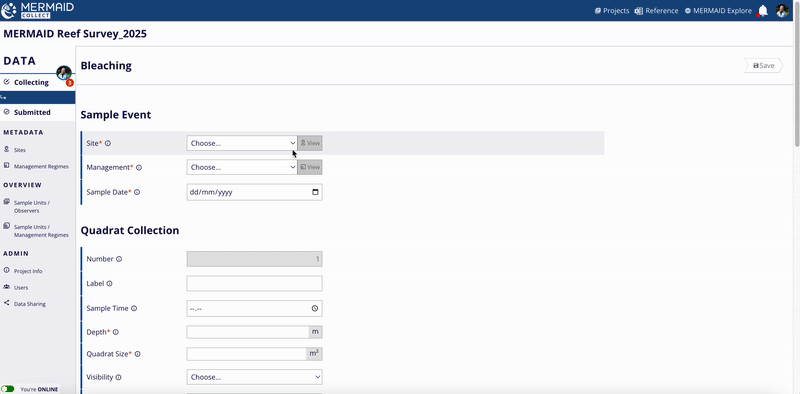In this rapid assessment field method, the sample unit is a collection of quadrats observed for coral bleaching on a single dive/snorkel. The method is described in detail here.
First, observers choose a consistent quadrat size (typically 1 to 2 m2) to use on the survey. During a survey, an observer records information from a set of quadrats, typically ~15-20 quadrats. Within a quadrat, an observer first counts the number of coral colonies for each hard coral genus and classifies each colony within 7 categories of bleaching severity: normal, pale, 0-20% bleached, 20-50% bleached, 50-80% bleached, 80-100% , and recently dead. After recording the coral colonies, the observer then visually estimates the cover of three main benthic groups within the quadrat: hard coral, macroalgae, and soft coral. Then, the observer swims a set distance (e.g. 10 fin kicks) to begin the next quadrat.
In MERMAID Collect, observations from the surveys are recorded in 2 sections. The 'Colonies Bleached' section records the total number of colonies in each bleaching category for each genus. The 'Percent Cover' section records the % cover of hard coral, soft coral, and macroalgae for each quadrat.

NAVIGATION TIP
Use the 'Tab' key to move across the colonies bleached and percent cover columns. At the end of the row, press 'Enter'/'Return' key to create a blank row to add the next complexity observation. If the same bleaching or percent cover is observed at the next interval, press the 'Tab' key at the end of the row to duplicate.